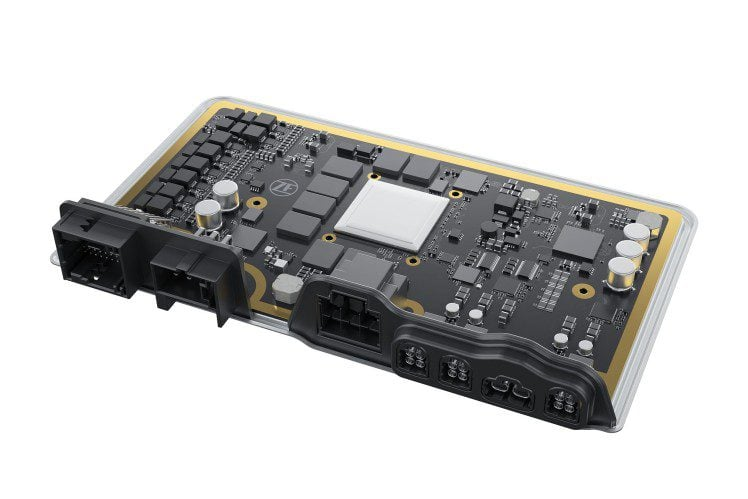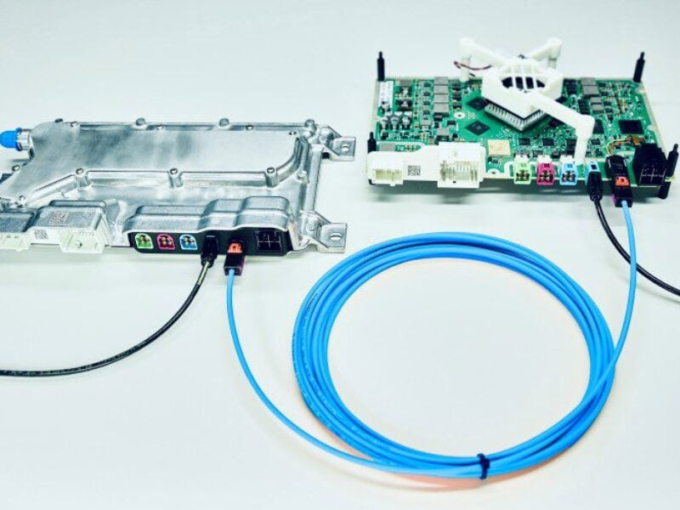Tier One supplier ZF in Germany is working with KD in Spain on the first multigigabit optical networking design for upgradeable vehicle networks.
ZF is integrating the KD7251 transceiver into its ProAI high-performance electronic control unit (ECU) and is the first optical transceiver to enable the transmission of data via automotive-grade optical fibres using the IEEE 802.3cz standard.
The KD7251 transceiver supports BASE-AU physical layers and complies with 802.3cz for data rates of 2.5, 5, and 10 Gbit/s over glass optical fibre links. It bridges MIPI sensors such as cameras (CSI-2), displays (DSI-2), and AI processors (PCIe) in vehicles with four inline connectors.
- KD opens optical interconnect lab in Spain
- Keysight team for multigigabit Ethernet
However the same cables and connectors will be reused for higher bitrates at 25, 50 Gbit/s and higher in the future, allowing the ECU to be updated with faster AI processors without having to change the vehicle network. This is a key step for boosting software defined vehicle (SDV) implementations as the ProAI can be upgraded with processor boards from 20TOPS to 1500TOPS with the latest Drive Thor GPU from Nvidia, on a common base board for different customer requirements.

The standard version measures 24 x 14 x 5cm while the multi-domain variant is 30 x 15 x 5cm.
Using fibre optics also saves a significant amount of weight compared to copper cabling, which in turn helps to reduce fleet consumption.
“At ZF, we’ve identified this ultra-fast transmission as a key technology for future vehicle electrical systems,” said Oliver Briemle, Head of Cross-Domain Computing at ZF. “The technology enables both short- and long-distance transmissions of up to 40 metres for cars and commercial vehicles. Test results show that optical multigigabit Ethernet is a versatile and future-proof solution for data communications.”
This implementation is a major milestone of converting the IEEE Std 802.3cz specifications into real products and applications says Carlos Pardo, CEO and Co-founder of KD. “This latest implementation in mainstream automotive networking further verifies our vision and path of utilizing fibre optics communications to solve connectivity challenges in harsh environments,” he said.
The KD7251 transceiver offers integrated EMC shielding, ensuring top-notch component-level EMC compliance without needing external components. This results in a smaller PCB area and lower BOM, eliminating the need for ESD protections, common mode chokes, EMI filters, or DC blocks. As an automotive part, it supports MACsec, ASIL-B FuSa, TSN, Wake-up & Sleep, OAM, and reliability functions.
As well as the ECU design, the transceiver can be used for various optical networking applications, from an Ethernet backbone, zonal gateway connectivity, smart antenna links, and connectivity for radars, cameras, lidar, displays, and high-performance computing units.



Leave a comment